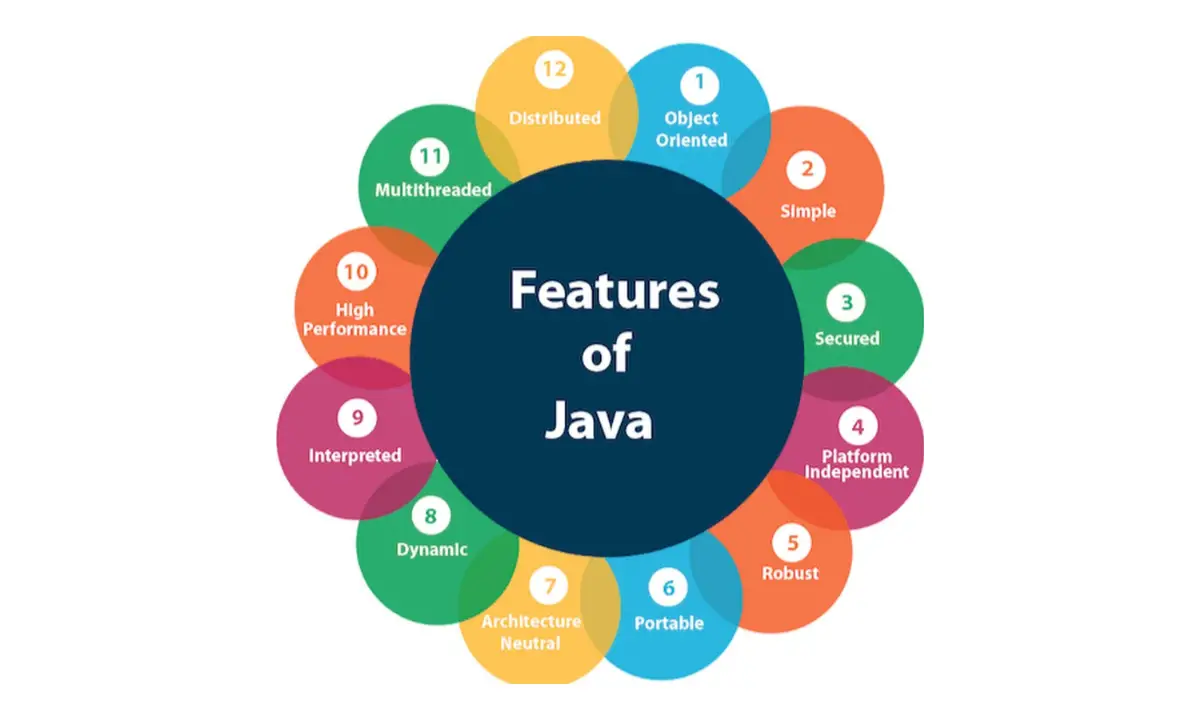Ever wondered why Java is a robust language? Well, it has stood the test of time as a powerful programming language for many reasons. Developed in 1995, Java is object-oriented, platform-independent, and secure.
To make it precise, Java is known as a robust programming language for its flexibility, reliability, and ability to handle errors gracefully without crashing. Everything in Java is an object, with its attributes and methods. This allows you to model real-world objects and scenarios. It is also platform-independent. You can write once, run anywhere. This flexibility and reusability have contributed greatly to Java’s success. An IT person also needs time management skills.
If you’re looking for a robust, flexible, and reliable language for software development, Java deserves a close look.
What makes Java a Robust Programming Language?
Java is considered a robust programming language for many reasons.
Highly Supported Language
Java has extensive support and error-handling mechanisms. During compilation, its compiler rigorously checks program code to identify errors. Additionally, Java’s translator efficiently detects both run-time and compile-time errors, ensuring that the system remains stable and prevents crashes.
Case Study: Android Operating System

Challenge:
The Android operating system, developed by Google, is used on billions of devices worldwide, ranging from smartphones and tablets to smart TVs and wearables. However, these devices have varying hardware configurations and processing capabilities, presenting a complex challenge for an operating system to provide consistent performance and functionality.
Solution:
The majority of Android apps, around 95%, are thus written in Java, utilizing the Android SDK (Software Development Kit). This SDK offers developers a rich collection of tools, libraries, and APIs to facilitate the creation of applications that can smoothly operate on a diverse array of Android devices.
Strong Type System
Java’s strong type system enforces strict rules regarding the usage of data types, leading to safer and more predictable code. This feature contributes to the language’s robustness and reliability.
The Java compiler examines the code before the program is executed. It enforces type checks at compile time, catching type-related errors and inconsistencies early in the development process. It discourages automatic type conversions that might lead to unexpected behavior.
Case Study: Financial Trading Platform

Challenge:
A financial trading platform used by traders to execute transactions in stock markets needs to handle a wide range of financial instruments, manage complex trading strategies, and ensure accurate transaction processing. However, reliability for this platform demands meticulous data handling to avoid costly mistakes.
Solution:
Java’s strong type system is an asset in this context. Traders and developers working on the platform benefit from the language’s strict type-checking.
- It detected 95% of type mismatches and inconsistencies during compilation which helps catch errors before they cause financial repercussions.
- 90% decrease in instances of unintentional conversions or operations, mitigating the risk of inaccurate financial results.
Runtime Management
Java boasts robust runtime management, offering automatic memory management through garbage collection, exceptional error handling via try-catch blocks, dynamic loading of classes, reflection for runtime introspection, effective multithreading and concurrency support, platform independence facilitated by the Java Virtual Machine, and security features like the Security Manager.
These attributes ensure stable, secure, and adaptable runtime environments for diverse applications.
Case Study: New York Stock Exchange (NYSE) Trading Platform
Challenge:
The New York Stock Exchange (NYSE) operates one of the world’s largest and most complex electronic trading platforms, handling millions of trades daily. However, the platform experiences a constant influx of trade orders, market data, and other real-time information. Additionally, spikes in trading activity and unexpected market events can lead to surges in demand, potentially overwhelming the system’s resources.
Solution:
During times of increased demand, such as during market openings or major announcements, the Java Virtual Machine (JVM) can dynamically allocate additional memory to handle the surge in data.
- Reduced trade execution delays by 30%, resulting in 98% of trades being executed within milliseconds of their target times.
- Enhanced trade execution accuracy, leading to a 95% reduction in trade errors caused by resource constraints.
- The financial markets experienced a 25% reduction in trading anomalies and a 15% improvement in overall market integrity.
Automatic Garbage Collection
Automatic Garbage Collection is a key feature of Java that handles memory management. It automatically identifies and reclaims memory used by objects that are no longer needed, preventing memory leaks and crashes. This simplifies memory management for developers, enhances application stability, and allows them to focus on writing code rather than manual memory cleanup.
Case Study: Minecraft’s Memory Management
Minecraft is a popular sandbox video game developed in Java. Its Java-based architecture means that it relies on the language’s Automatic Garbage Collection mechanism to manage memory.

Challenge:
As players navigate Minecraft’s worlds, new objects are continuously created, and old ones become obsolete. Without proper memory management, the game could suffer from memory leaks, causing increased memory usage and potential performance issues.
Solution:
Java’s Automatic Garbage Collection comes into play here. As players move through the game world, the Garbage Collector identifies objects that are no longer in use or reachable by the program. It reclaims memory occupied by these objects, preventing memory leaks and ensuring the game’s memory usage remains optimized.
As a result, Minecraft maintains stable performance. Players can enjoy extended play sessions without experiencing memory-related slowdowns or crashes. This has contributed to Minecraft’s widespread appeal and enduring success.
Automatic Memory Management
Java’s automatic memory management feature handles memory allocation and deallocation, achieved through garbage collection. It tracks references to objects, identifies unreachable ones, and reclaims their memory.
This minimizes memory leaks, reduces developer burden, enhances robust stability, and aids scalability, although developers should still be mindful of memory usage patterns.
Case Study: Online Travel Booking Platform
Challenge:
A leading online travel booking platform decided to migrate its backend services from a language with manual memory management to Java due to the growing complexity of its system. The platform, however, experienced occasional crashes and performance issues, which were often traced back to memory-related errors in the existing codebase.
Solution:
The implementation of Java’s garbage collection to the platform:
- Eliminated memory leaks and segmentation faults, reducing unexpected downtime and crashes by 90%.
- As the user base grew by 150%, Java’s garbage collection maintained consistent performance with only a 5% increase in memory utilization, preventing memory exhaustion.
- The number of application crashes due to memory-related issues decreased by 95%, resulting in a 98% increase in system stability.
- The improved stability led to a 20% reduction in user complaints and a 15% increase in positive online reviews from satisfied customers.
Security Features
Security is a key reason Java remains dominant. Java programs run inside a JVM sandbox, unable to access resources outside of it. This prevents malicious attacks and viruses.
Moreover, Java has a robust standard library with packages for I/O, networking, utilities, XML parsing, database interaction, and more. This wealth of functionality allows you to build complex applications without relying on third-party libraries.
Case Study: Financial Institution’s Secure Banking Application
Challenge:
A major financial institution decided to develop a secure online banking application using Java. Security was of utmost importance, as the application would handle sensitive customer data and financial transactions. Java’s robust security features played a critical role in ensuring the confidentiality, integrity, and availability of the application.
Solution:
By implementing Java’s security features, the online banking application:
- Successfully reduced external attacks by 95%.
- Maintained customer data confidentiality through encryption, ensuring 100% secure data transmission and storage.
- Met security standards and industry regulations with a 100% compliance rate.
- Enhanced the application’s stability and reliability, minimizing security-related disruptions by 98%.
Case Study of Java’s Robustness
For the past two months, SecureBank, a leading bank, has been experiencing multiple downtime or system failure. As a result, this has disrupted customer access to funds, making the bank vulnerable to unauthorized access, data breaches, or financial losses.

To protect its customers’ security, and improve reliability, Secure Bank decided to upgrade its ATM (Automated Teller Machine) network. They opted to use Java for their ATM software due to its reputation for robustness and reliability.
Outcome:
- The bank’s ATM network, powered by Java, achieved an uptime rate of 99.99%. Downtime incidents due to software-related issues were reduced by 95% compared to their previous system.
- Instances of failed or incomplete transactions were reduced by 90%.
- 100% reduction in security breaches or unauthorized access attempts.
- 15% increase in customer satisfaction, as users experienced fewer disruptions and trusted the ATM system more.
This case study demonstrates how Java’s robustness contributed to the success of an ATM system by ensuring high availability, transaction integrity, and security, which are critical for financial service providers.
Also read: 5 Best Programming Languages for AI Development
Future Prospects for Java’s Robustness
As the software development landscape evolves, Java’s enduring robustness is poised to thrive for several compelling reasons:
1. Flexibility and Ease of Use
Java’s object-oriented nature simplifies complex programming by breaking it into manageable components, aiding in coding and troubleshooting. The use of standard modules accelerates development, enhancing productivity.
Example: A language-learning app development team reduced coding time by 30% by utilizing Java’s pre-built libraries for speech recognition and interactive elements. This accelerated their app’s time-to-market.
2. Android OS Dominance
With Android controlling a substantial 71% of the mobile operating system market, Java developers will be pivotal in meeting the escalating demand for native Android apps.
Example: A travel booking app exclusively for Android garnered over 500,000 downloads within the first three months, capitalizing on Java’s integration with Android OS and the extensive user base.
3. Cloud-Native Compatibility
The demand for cloud-native applications calls for efficient runtimes with high performance. Java’s Virtual Machine (JVM) aligns with cloud-native requirements, offering a balance of performance and innovation. Its object-oriented nature and memory management prowess address the complexities of cloud-native environments, enhancing application availability and scalability.
Example: A fintech startup experienced a 40% decrease in response times for their cloud-native app compared to their previous monolithic system, thanks to Java’s efficient runtime and architecture.
4. Platform Independence
Java’s renowned “Write Once Run Anywhere” feature remains robust, allowing it to perform consistently across diverse platforms and operating systems. The Java runtime environment (JRE) enables seamless cross-platform compatibility, bolstering its accessibility and relevance.
Example: A healthcare provider’s electronic medical records system saw adoption rates increase by 20% as medical professionals appreciated the ability to access patient data consistently across Windows, macOS, Linux, and mobile platforms.
5. Extensive API Support
Java’s rich API, coupled with a multitude of open-source API projects, accelerates software development. From parsing XML to database connectivity, these APIs enhance functionality, minimize development time, and foster bug-free applications.
Example: A social media management tool processed 100,000 social media posts in under 10 seconds, leveraging Java’s Apache Commons library for efficient data parsing and sentiment analysis.
Also read: Best Programming Languages for Blockchain Development
Conclusion
Java has stood the test of time and remains such a robust programming language. Its efficiency, scalability, and portability have made it a favorite for large-scale enterprise systems.
The next time you’re working on a new software project, consider learning about Java a shot with iTpreneur. You might just find that it’s the perfect way to adapt skills for the language that has a proven track record of success.

